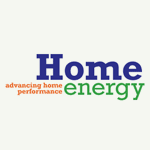Share
Related Topics
Tagged As
If too little outdoor air enters a home, pollutants can sometimes accumulate to levels that can pose health and comfort problems. Likewise, one approach to lowering the concentrations of indoor air pollutants in your home is to increase the amount of outdoor air coming in.
We do not strictly control Google ad content. If you believe any Google ad is inappropriate, please email us directly here.
Unless they are built with means of mechanical ventilation, homes that are designed and constructed to minimize the amount of outdoor air that can "leak" into and out of the home may have higher pollutant levels than other homes. However, because some weather conditions can drastically reduce the amount of outdoor air that enters a home, pollutants can build up even in homes that are normally considered "leaky."
Most home heating and cooling systems, including forced air heating systems, do not mechanically bring fresh air into the house. Opening windows and doors, operating window or attic fans, when the weather permits, or running a window air-conditioner with the vent control open increases the ventilation rate. Local bathroom or kitchen fans that exhaust outdoors remove contaminants, including moisture, directly from the room where the fan is located and also increase the outdoor air ventilation rate.
Ideally, new homes will be built to minimize leakage to control energy loss, improve comfort and minimize the transport of moisture and pollutants through the building shell. These homes should then also have mechanical ventilation to remove pollutants generated in the home and provide outdoor air in a controlled manner. Whether a mechanical ventilation system makes sense in your existing homes depends on the house, your existing heating, ventilation and air-conditioning (HVAC) system, and the changes you have planned. You should discuss this with your HVAC contractor. A local Weatherization office, or building performance contractor, might also be able to help you with this decision or point you to local experts.
How much ventilation do I need?
The American Society of Heating, Refrigeration and Air-Conditioning Engineering (ASHRAE) recommends (in its Standard 62, "Ventilation for Acceptable Indoor Air Quality") that homes receive .35 air changes per hour, but not less than 15 cubic feet per minute (cfm) per person. A common rule of thumb is the 15 cfm multiplied by number of bedrooms in the house plus one. For example, a 3 bedroom house would require at least 60 cfm of outdoor air. [(3 bedrooms + 1) x 15 cfm = 60 cfm]. Kitchens should have an intermittent exhaust capacity of 100 cfm; bathrooms an intermittent capacity of 50 cfm. (ASHRAE also notes that "dwellings with tight enclosures may require supplemental ventilation supply for fuel-burning appliances,including fireplaces and mechanically exhausted appliances. See information on combustion appliances.)For a basic overview of ventilation, including different types of ventilation systems, try the following resources:
- Homeowner's Guide to Ventilation, by the New York State Energy Research and Development Authority's (NYSERDA). In addition to a basic general discussion of ventilation, this document includes recommendations which are especially useful for homes in cold-climates.
- ENERGY STAR® has finalized the ventilation fan specification. www.energystar.gov/index.cfm?c=vent_fans.pr_vent_fans
- Home Ventilation Guide, by the Home Ventilating Institute.
- Home Ventilation Options for Home Builders, from Energy Source Builder.
For a detailed analysis of ventilation system options for new homes, see the Lawrence Berkeley National Laboratory report Recommended Ventilation Strategies for Energy-Efficient Production Homes. Copies of ASHRAE Standard 62 are available from ASHRAE.
HHI Error Correction Policy
HHI is committed to accuracy of content and correcting information that is incomplete or inaccurate. With our broad scope of coverage of healthful indoor environments, and desire to rapidly publish info to benefit the community, mistakes are inevitable. HHI has established an error correction policy to welcome corrections or enhancements to our information. Please help us improve the quality of our content by contacting allen@healthyhouseinstitute.com with corrections or suggestions for improvement. Each contact will receive a respectful reply.
The Healthy House Institute (HHI), a for-profit educational LLC, provides the information on HealthyHouseInstitute.com as a free service to the public. The intent is to disseminate accurate, verified and science-based information on creating healthy home environments.
While an effort is made to ensure the quality of the content and credibility of sources listed on this site, HHI provides no warranty - expressed or implied - and assumes no legal liability for the accuracy, completeness, or usefulness of any information, product or process disclosed on or in conjunction with the site. The views and opinions of the authors or originators expressed herein do not necessarily state or reflect those of HHI: its principals, executives, Board members, advisors or affiliates.








